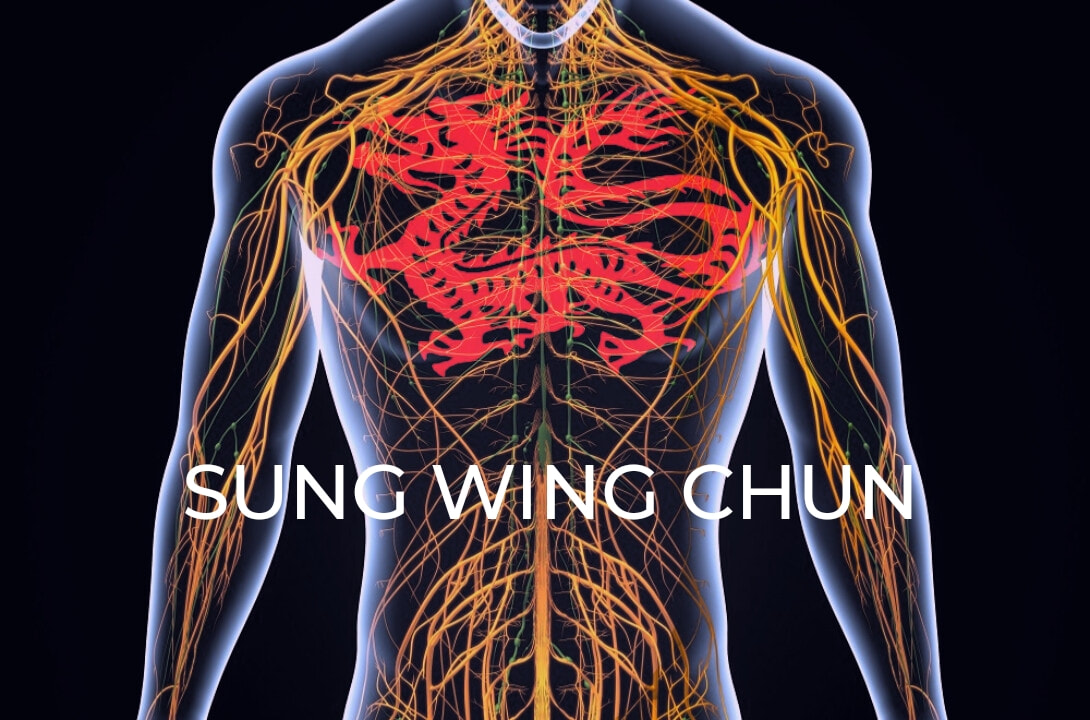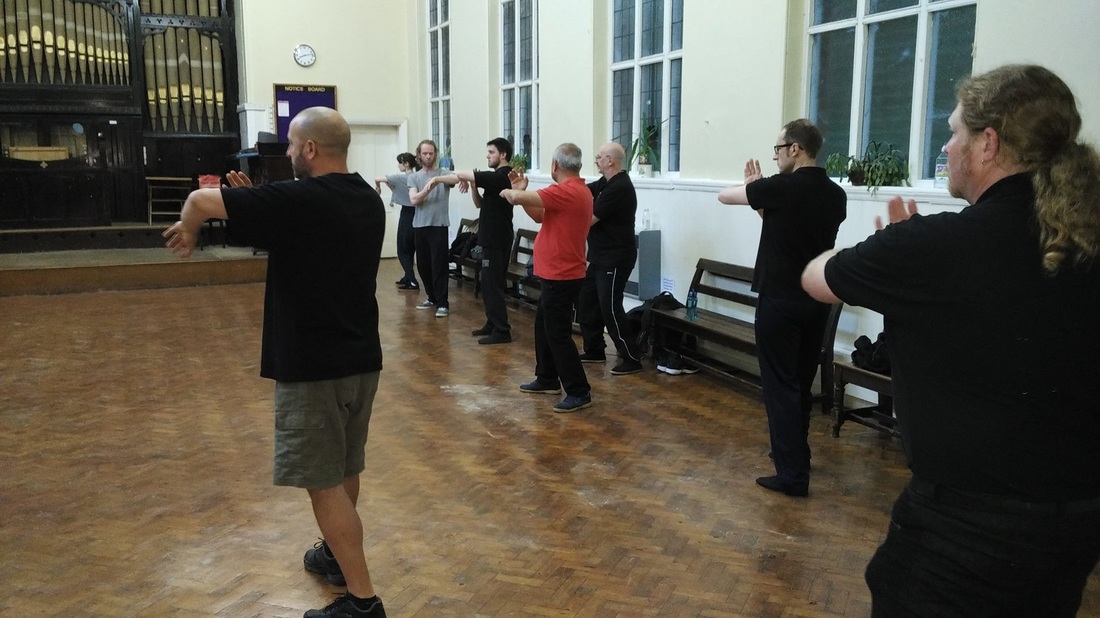Chum Kui - part 2
9/23/2016
On the face of it the chum kui form is one of the strangest most abstract martial arts forms that there is. The first section all makes sense; it introduces the idea of pivoting around your own centre and adding a second or third rotation to power the movements of the arms, but thereafter it gets bizarre.
First the kick, not a straightforward front kick but one where you have first pivoted to your side. The angle impinges your hip and makes lifting the leg awkward unless you lean back. Then the step, not forward or back step but sideways like a crab! Strangest of all is the pivoting kick which you only practice with one leg; hardly appears to be a kick at all. It would be an easy option to just trust your sifu and believe somehow practicing the form for thousands of hours will infuse new ability. Alternatively you could dismiss having to learn it as a necessary chore to pass a grading. The third option is THINK... The straight kick is actually done from an awkward position on purpose, not because you would necessarily fight like that but because it makes you acutely aware of your balance, whether you are lifting or releasing your leg and whether you are leaning back. It is essentially giving as many tools as possible to assess your ability. Do it well from that position and from a more 'relaxed' position it will be a piece of cake. Similarly the side step is teaching how to move your mass, there is a small rotation from your centre and you learn to move from there and not push with your legs. Once understood from the side you can use in any direction. Finally the pivoting kick, this helps us work on pivoting on one foot, on intercepting a sideways attack and how to protect your centre. All done whilst maintaining your centre of balance. It even shows you how to release your mass when you lower your leg (a technique in itself). These are all abstract ideas, not necessarily applications which you would find with an ordinary martial art. I like to think of Chum Kui as a test of how well you have learned the lessons of Sil Lim Tao. If you cannot connect your arm movements to your centre of mass, then moving your body will only cause you more tension and impede your techniques. Silmilarily pivoting without relaxed hips will just mean you are pushing your body behind your arms (unstable). Perhaps it was a genius who invented wing chun, or a mad person, I am not sure. It is easy to look for things that are not there but at the end of the day it is best to invest the time in looking rather than believe everything you are told. Then again, perhaps I have made all this up...
0 Comments
Your comment will be posted after it is approved.
Leave a Reply. |
AuthorKeeping you up to date with what is happening in class Archives
July 2024
Categories |


 RSS Feed
RSS Feed